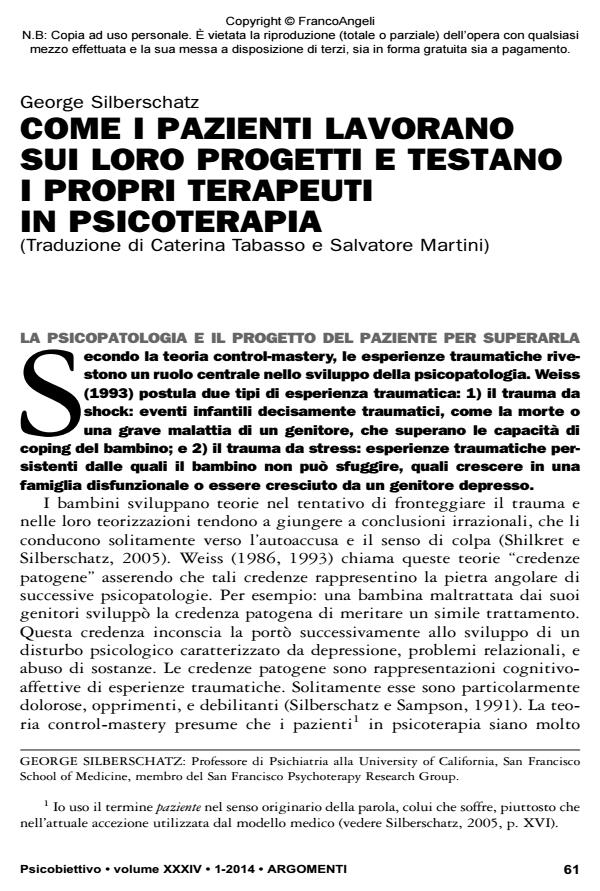How patients work on their plans and test their therapists in psychotherapy
Journal title PSICOBIETTIVO
Author/s George Silberschatz
Publishing Year 2014 Issue 2014/1
Language Italian Pages 11 P. 61-71 File size 539 KB
DOI 10.3280/PSOB2014-001005
DOI is like a bar code for intellectual property: to have more infomation
click here
Below, you can see the article first page
If you want to buy this article in PDF format, you can do it, following the instructions to buy download credits

FrancoAngeli is member of Publishers International Linking Association, Inc (PILA), a not-for-profit association which run the CrossRef service enabling links to and from online scholarly content.
Psychopathology stems from traumatic childhood experiences that frequently lead to the development of unconscious pathogenic beliefs. Patients enter psychotherapy with an unconscious plan to disconfirm their pathogenic beliefs. There are three primary ways they can do so: 1) by using the therapeutic relationship per se; 2) by using new knowledge or insight conveyed by the therapist’s interpretations; or 3) by testing the therapist directly. There are two different testing strategies: 1) in a transference test the patient tries to assess whether the therapist will traumatize her as she or he had been traumatized in childhood; 2) in a passive-into-active test, the patient traumatizes the therapist as she or he had been traumatized, as part of her or his effort to master the trauma. Patients are highly motivated to disconfirm their pathogenic beliefs. Typically they must test the therapist throughout the treatment to do so.
Keywords: Control-Mastery Theory; Psychodynamic Theory, Psychotherapy
George Silberschatz, Come i pazienti lavorano sui loro progetti e testano i propri terapeuti in psicoterapia in "PSICOBIETTIVO" 1/2014, pp 61-71, DOI: 10.3280/PSOB2014-001005